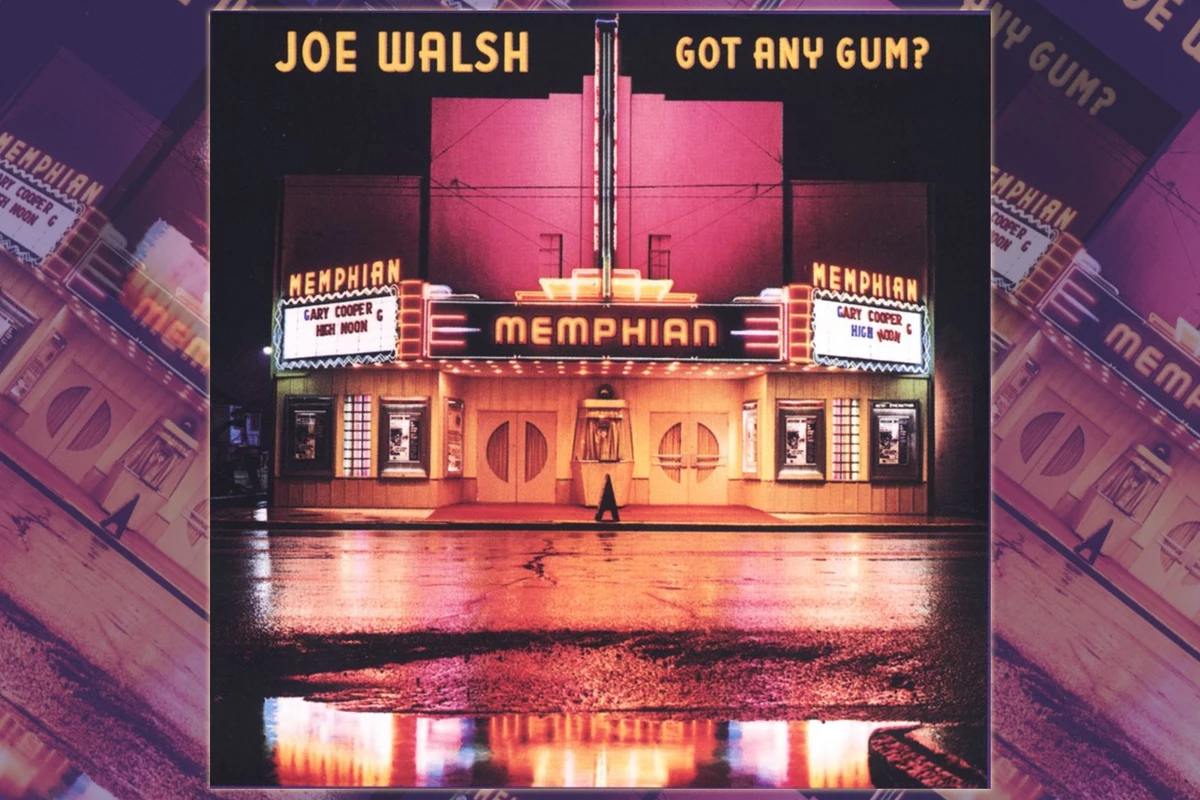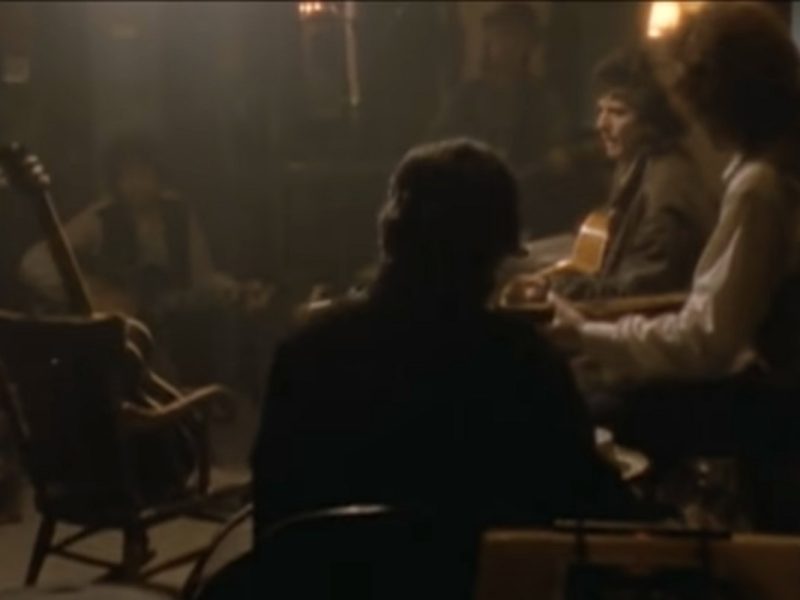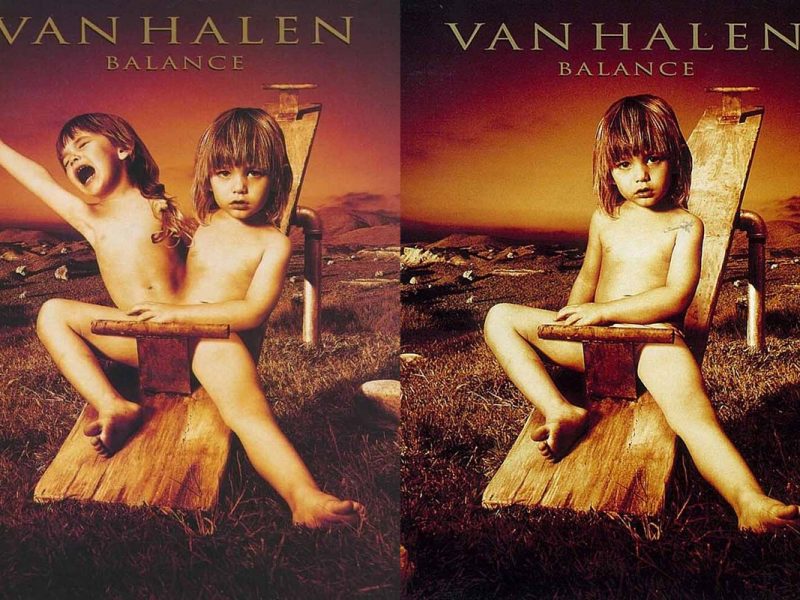The late ’80s were a challenging period for classic rockers: Could they remain relevant and maintain their levels of success, born of moments six or eight or 10 years before, when they were topping the charts and regularly packing arenas? Many were staring down their 40s, if not meekly entering them, crossing a threshold that at one time was impossible to fathom. Rock was a young person’s game, a music of rebellion and reaction to those of a certain, older set.
Joe Walsh was among this aging rock-star demographic, turning 40 in 1987. He dealt with his age and the expectations of a rock audience by both indulging in a debilitating drinking habit, while embracing then-current keyboard-heavy sounds on the solo album he released that year, Got Any Gum?
The bulk of the project was recorded at Memphis’ renowned Ardent Studios, where producer Terry Manning preferred to work. Walsh liked Studio A in the facility, according to studio manager Jody Stephens, who initially rose to fame as Big Star’s drummer. The room “has huge baffles so that you can really damp things down to where it’s almost a ’70s studio,” Stephens later told Goldmine. Others who have made albums there include the Allman Brothers Band, Lynyrd Skynyrd and Robert Cray.
Drummer Chad Cromwell, a session musician and would go on to play with everyone from Neil Young and Mark Knopfler to Michael Bolton and Jessica Simpson, remembers how he got asked to play on Got Any Gum? It all started, in typical fashion, during a messy gig with Walsh.
“I met Joe at a recording studio in Memphis where I worked a lot and did a lot of sessions,” Cromwell told Rolling Stone. “When Joe came into town, he just came over and there was some sort of party going on. I was introduced to Joe. That was one of the strangest things because we just stayed up all night, acting like idiots, as everyone would do in the mid-’80s.”
Walsh asked Cromwell to accompany him to Dallas, where they would rehearse for a week with bassist Rick Rosas before playing a radio station-sponsored festival concert in Los Angeles. Cromwell agreed, but the week went by and no rehearsals happened. “We get on a plane [at the end of the week] and fly to L.A.,” Cromwell recalled. “We get off the plane and literally get in a car and drive out to [the venue]. There are 20,000 people at this venue and I am shitting myself since I still haven’t rehearsed with Joe and Rick.
“I remember walking onstage,” he added, “going, ‘Okay! I’m probably going to be put on a plane home after this is over with, but fuck it. If he doesn’t want to rehearse, I’m just going with it, with him. I’ll see what happens.'”
Listen to Joe Walsh Perform ‘In My Car’
A few missteps aside, the gig went well, and Cromwell became Walsh’s first-call drummer when he went back to Memphis to record Got Any Gum? at Ardent. Cromwell was intrigued by working with Manning, who had provided the drum programming and synthesizer work on Eliminator – the 1983 LP that brought the rough-edged ZZ Top a whole new sound, and a big hit record.
“Terry was pretty big on whatever the latest, coolest piece of gear would be at the time,” Cromwell told Rolling Stone. “There was a company called AMS – they made a gated reverb box and then a delay box that probably is most well known as the drum sound on ‘In the Air Tonight’ by Phil Collins. Same gear, same box.
“If you listen to Got Any Gum?, you’re going to hear the same thing,” Cromwell added. “I remember thinking at the time, ‘This is the most incredible drum sound I’ve ever heard in my life.’ I wasn’t really thinking about how dated that would sound 10 years later.”
The drum work wasn’t the only quintessentially ’80s sound on Got Any Gum? as the preponderance of synthesizers and compression led to an overall thin audio quality. That was, of course, somewhat typical for the era – but not for Walsh. For perhaps the first time, it sounded like his guitar was fighting to be heard over the patches and plastic. Got Any Gum? was about as far as one could imagine Walsh getting from the sound he’d all but patented since the first James Gang record decades earlier.
Walsh saw it differently. “What I’m really trying to do is get back to that young, aggressive feeling,” he told the Sun-Sentinel while on a supporting tour. “I’m full circle from being young and curious in the James Gang, going through development as an artist in the Eagles. I want to get back to what it was.”
Opinions are split on whether Walsh’s curiosity actually resulted in a good record. There are certainly some intriguing songs to pick through, dated production and all.
“In My Car” was co-written with Ringo Starr and originally appeared on Starr’s 1983 album Old Wave, with Walsh co-producing and playing lead guitar. The big keyboard sound on Walsh’s cover sounds like it should be on a soundtrack to an ’80s high-school movie – though the keyboards are underpinned by an acoustic guitar, and Walsh plays a tasty solo in the middle of the song.
Listen to Joe Walsh Perform ‘The Radio Song’
One of the few tracks on Got Any Gum? that got any traction was “The Radio Song,” which was a minor hit at rock radio, hitting No. 8 on the Billboard Mainstream Rock Tracks chart. It’s a pretty simple song about the pleasures of listening to music, with a chorus that’s a winner, and some insistent guitar work that cuts through the atmospheric synthesizers, however briefly.
Coming in late on the record is “Memory Lane,” a touching ballad cut from a similar fabric as “Pretty Maids All in a Row,” Walsh’s contribution to the Eagles’ Hotel California. It’s a heavy sentiment, on the power of looking back, and how memories can pull us out into “faraway places and long ago names.”
“Fun” is perhaps the cut that sounds most like classic Joe Walsh from Got Any Gum? It’s got a guitar sound right out of “Rocky Mountain Way” and “Funk #49,” with cannon-shot drums and an unfettered Walsh vocal. All the hard-rock noise is given purpose as he implores the listener to have a good time – while also noting how good a time Walsh is also having. How this didn’t crack rock radio like “The Radio Song” did is a mystery.
Unfortunately, few people embraced Got Any Gum? Released on Oct. 29, 1987, the LP was a critical dud. (The Los Angeles Times, in a typical comment, described it as a “monumental flop.”). Got Any Gum? was a commercial disappointment as well, topping out at No. 113 on the Billboard album chart.
Walsh was still a sizable live draw, but his physical condition was becoming a concern. Supporting the record at the end of 1987 and into 1988, Walsh began to show the effects of his issues with alcohol. Carter Alan, a writer and longtime disc jockey in the New England area, saw it firsthand when he served as emcee at a Walsh show in New Hampshire.
“What was tragic,” Alan said in his book Decibel Diaries: A Story of Rock in 50 Concerts, “was the extent to which Joe Walsh’s drinking had crippled his ability to play. I almost cried as he fumbled the solo to ‘Life in the Fast Lane,’ unable to replicate or even approach the mastery of his original studio performance. While Walsh’s fingers responded clumsily, as if operated by an inept puppeteer hidden in the rafters above, several extended episodes of slurry rhetoric at the microphone replaced much of the music.”
Listen to Joe Walsh Perform ‘Fun’
Walsh’s promotional appearances on television shows like Late Night with David Letterman and The Arsenio Hall Show were shambolic, with sloppy performances followed by uncomfortable interview segments between the hosts and a visibly impaired Walsh.
On Hall’s show, Walsh accused the host (a fellow Cleveland native) of stealing his hubcaps, before degenerating even further into a drunken announcement of his candidacy for president. He’d also done so in 1980, to great comic effect, but repeating the joke while slurring his words on national television in 1987 was not so funny.
It took the 1994 Eagles reunion to get Walsh to rehab – and he says he’s remained sober to this day. Chad Cromwell remembers the circumstances that led Walsh to get help. Cromwell was having dinner with a friend in a restaurant in Hollywood when Walsh, fresh from a meeting with his Eagles bandmates, showed up and approached their table.
“He looked straight at us and said, ‘They won’t let me in the band if I don’t go to rehab. I gotta go to rehab,'” Cromwell told Rolling Stone. “He was just a wreck. It was heartbreaking. He was in such bad shape. The next morning, he went to rehab. He has been sober ever since.”
Walsh’s fortitude is the likeliest reason he has remained sober, but Cromwell also credits others for compelling him to get in that condition. “The Eagles definitely saved his life,” Cromwell added. “No question about it.”
Combining sobriety and the life of a working musician was no easy task, Walsh admitted in a 2012 talk with Interview. “It wasn’t like you flick a switch, and you’re sober,” he said. “It takes a while. You have to learn how to do everything all over again. You can measure how long that takes in terms of years.
“What I didn’t know at the time was how to write music and do rock ‘n’ roll and live rock ‘n’ roll and record sober,” Walsh added. “I didn’t try to do that at first. I learned how to take care of myself and then play in front of people. I didn’t tackle going back to rock ‘n’ roll until I had some sobriety under my belt.”
The Most Awesome Live Album From Every Rock Legend
Some of these concert recordings sold millions of copies, while others received little fanfare. Still, they remain the best of the best.
How a Drug Dealer Inspired Eagles’ ‘Life in the Fast Lane’



